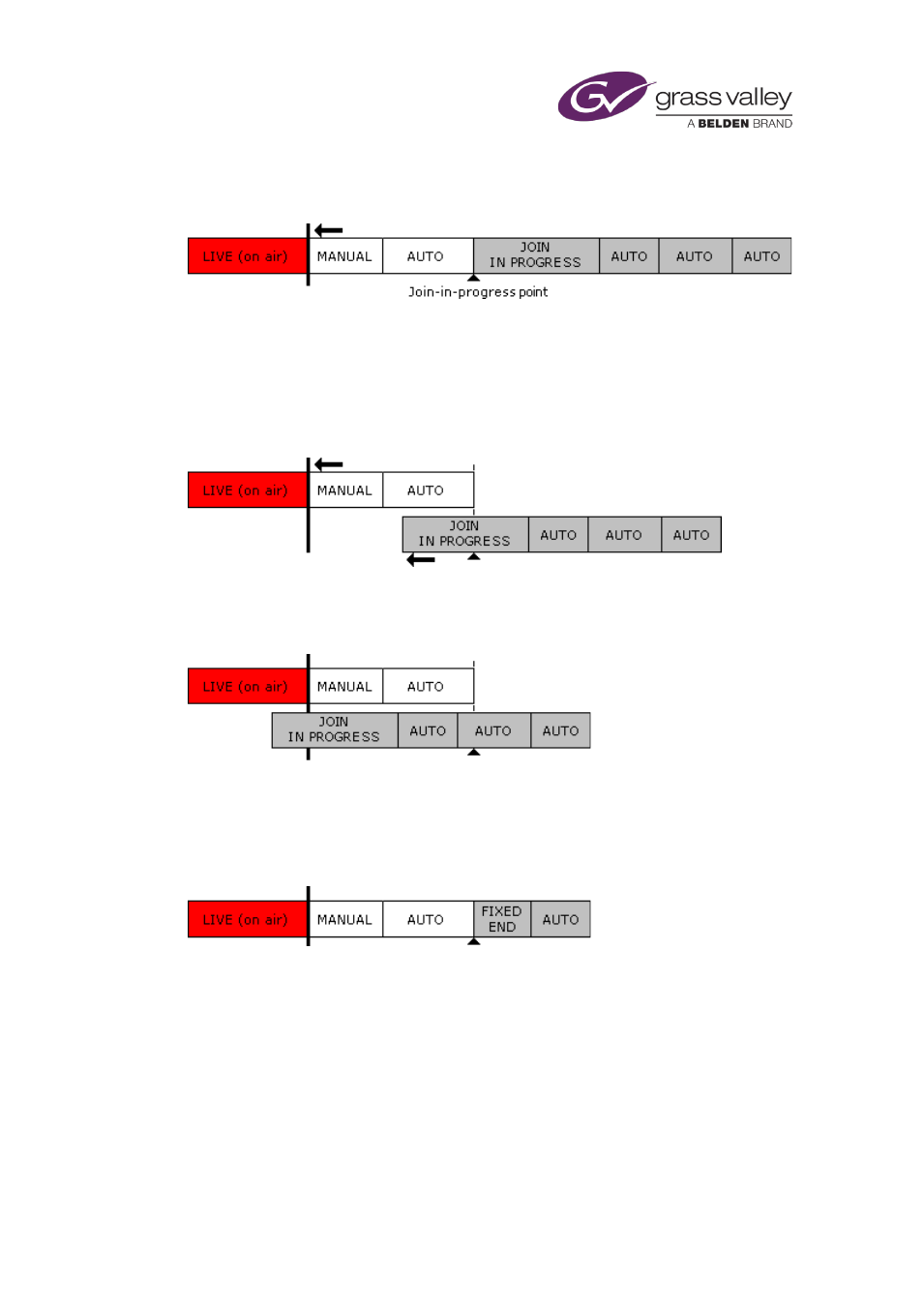Grass Valley iTX Desktop v.2.6 User Manual
Page 111

The Event Editor
The next diagram shows the events moving from right to left along the timeline. Events in the
join-in-progress stream are shaded grey.
The join-in-progress point identifies the first frame in the join-in-progress stream that is to
appear on air. Until the live event overruns its scheduled duration, this point is at the scheduled
in-point of the join-in-progress event.
The live event may continue for so long that it causes the join-in-progress event, with its fixed
start time, to overlap the preceding event as it moves along the timeline. We can show the join-
in-progress stream as running parallel to the main stream:
Since the join-in-progress point is fixed relative to the last event on the main stream, it moves
back through the join-in-progress stream as this moves along the timeline. As a result,
successive events in this stream may expire before one of them is required to go to air:
When the manual event is taken to air, and the channel exits the hold state, iTX merges the
join-in-progress stream with the main schedule stream. In doing this, it skips all events in the
join-in-progress stream up to the one that is marked by the join-in-progress point. It changes
the time mode of this event from Auto to Fixed End and adjusts its in-point to match the time
represented by the join-in-progress point:
iTX plays out the schedule events after the join-in-progress point at their original scheduled
times.
Note:
•
To prevent playout failure, the schedule must allow iTX enough time to cue the event with
the Fixed End time mode after the manual event is taken to air.
Adding an event before a join-in-progress event
March 2015
iTX Desktop: Operator Manual
91
